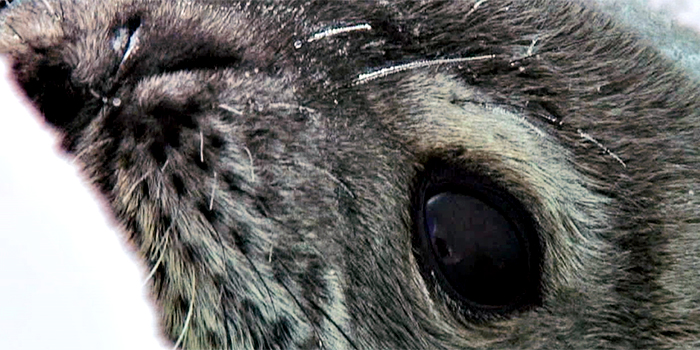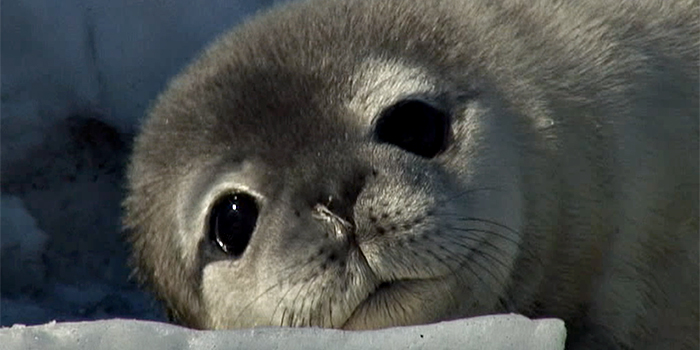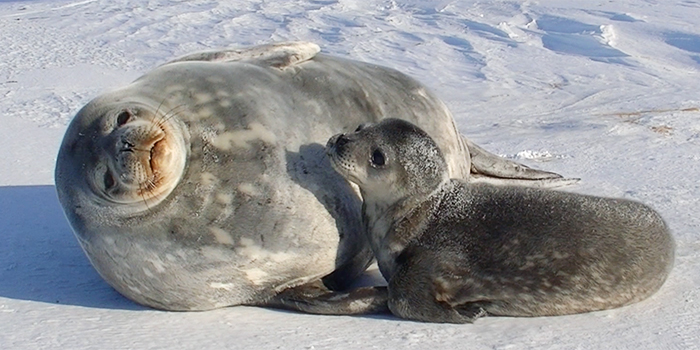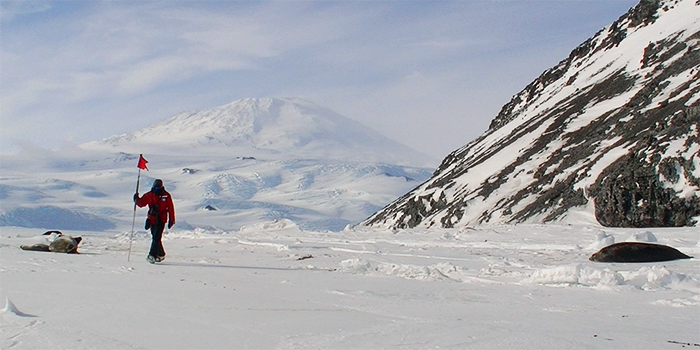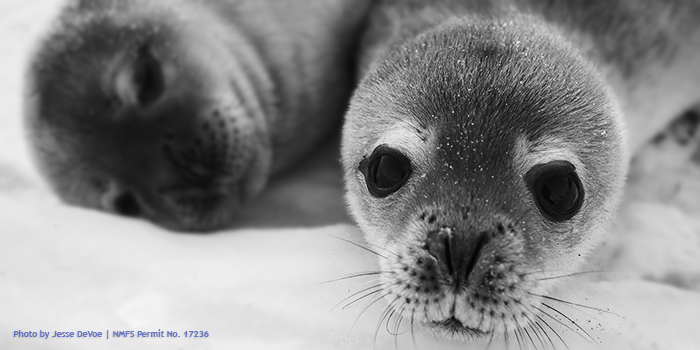
 |
||
 |
||
 |
||
 |
||
 |
||

A SELECTION OF ANTARCTICA FIELD BLOG ARTICLES What We Do and Why We Do It A friend of mine called the other day to tell me he liked the new Weddell seal video. He also said he wondered, though, just why it is that these particular Antarctic seals are the focus of our study. After all, he asked, why can't all this population stuff be studied just as thoroughly by working with seals that live closer to home--like the harbor seals that congregate down at our local breakwater?
As I began to think more about what he said, I realized that he was asking a very good question--why is it so important to study these particular Weddell seals? So here it is: A list of 10 top reasons why it's important to study these Weddell seals of Erebus Bay in Antarctica: Reason #10. This group of Weddell seals in the Erebus Bay area of Antarctica's Ross Sea is a healthy, stable population of high level marine predators. So it's kind of like being able to study a healthy patient if you're a doctor--it helps you to better understand how a healthy population of long-lived mammals works in order to better understand and manage other long-lived species that are endangered or aren't doing as well. Reason #9. This stable population of long-lived mammals lives its entire life in the most pristine marine environment left on Earth. So this is a rare opportunity to study a healthy population of marine predators that is currently functioning well in a healthy marine environment--and in so doing gain a better understanding of healthy interaction in a healthy ecosystem.
Reason #8. This stable population of Weddell seals, however, is living in a nearly pristine marine environment that is just beginning to experience potentially problematic environmental changes--both natural and man-made--climate change, increased ocean acidification, and possibly an increasing occurrence of extreme environmental events, such as more frequent calving of giant icebergs. These seals can act as a bellwether of the kinds of effects such environmental changes can have on a previously healthy marine mammal population. Reason #7. These Weddell seals are a high level marine predator that are part of a currently intact food web, but that food web is just beginning to experience measurable changes possibly related to unregulated or under-regulated commercial fishing pressure on Antarctic Toothfish, krill, and other commercially harvestable marine life in the Southern Ocean. These seals can act as a bellwether of the kinds of effects such changes in the food web and in marine resources can have on a previously healthy marine mammal population.
Reason #6. Located very near the main U.S. Antarctic base, McMurdo Station, this population of Weddell seals provides researchers relatively easy access using surface vehicles based at McMurdo Station, with an entire support system in place to ensure vital science support to the researchers. Reason #5. Tending to be fairly docile toward researchers, these Weddell seals are relatively easy to approach for scientific observation and interaction. This is likely because Weddells do not have a long history of encounters with humans. Reason #4. These Weddell seals are "philopatric" meaning they tend to return to the same areas where they were born to have their own pups. So even though there is some limited immigration and emigration of seals into and out of the established pupping colonies, for the most part this is a fairly closed and stable population, with predictable pupping colony sites.
Reason #3. The moms and pups are easily detected on top of the sea ice for the first week or so after the pups are born and before they learn to swim because they must remain on the surface, where they are particularly visible and accessible to the researchers. Reason #2. Because of this ease of access, this particular population of Weddell seals has been studied for nearly half a century (>47 years), and an extensive database has been developed during that time that includes information on thousands of mom/pup pairs over several generations. Reason #1. This longterm population database of a long-lived mammal studied intensively over generations spanning decades is unique in the scientific community, and provides scientists with a dataset that makes possible innovative ecological discoveries as the fields of population modeling and statistical methodology continue to advance.
Oh, and this top ten list doesn't even mention that these amazing animals are the southernmost mammal on Earth! That they are fantastic divers that travel further under the sea ice than any other animal on our planet to birth their pups safely away from other large predators. And that they spend a lot of time nurturing their young and likely passing on valuable survival skills during the nursing period! - Mary Lynn Price
What Can Ecologists Learn By Tagging These Weddell Seals?
So, what can Weddell seal researchers learn about these seals by tagging them? Well, it turns out, a lot! When a small, uniquely numbered tag is attached to the rear flippers of a Weddell seal, the researchers record a substantial amount of data on that animal. Lead scientist on the Weddell project Jay Rotella notes, "For each seal observation, we record the date, location, seal tag numbers, sex, and age class. For females with pups, we also record that they are a pair. For a subsample, we also collect a very small tissue sample for genetics work and record that. If we weigh the seal or outfit it with a swim tag, we also record that information."
The researchers know how many seal pups survive to return to the pupping colonies as adults (around 20% of female pups survive to return as adults), how long the seals live (the oldest seal recorded in the study to date is 30 years old), how many pups the females have over their lifetimes (anywhere from 0 to 21 pups over a lifetime, recorded to date), and which of those pups survived to return to the study area to have pups of their own. A great example of how well the researchers can trace the history of Weddell moms and pups using this extensive database can be found in the story of a very old seal very recently re-discovered this season at age of 30, with her record-setting 21st pup! For well over a decade, many of the Weddell seal pups have been weighed at three different stages of their nursing period, which lasts approximately 45 days. Researchers weigh a select number of pups to determine their mass (weight) at birth, at the mid-nursing period, and at weaning. Some Weddell moms have been weighed during that nursing period, as well. So, the mass of these seals at various points in their lifetimes is also a vital part of the extensive project database, and central to the mass dynamics work of the Weddell seal population project. Unfortunately, due to the delay in the field season start this year because of the government shutdown, very few Weddell pups and moms will be weighed this season due to lack of data regarding accurate dates of pup births to correspond to those animals' weights.
In 2010, the project began a pilot study of Weddell seal pup swimming behavior during the nursing period. Co-Principal Investigator Bob Garrott developed a small temperature tag to attach to a select number of pups' flippers to record the surrounding temperature at six minute intervals over the course of the nursing period. This simple temperature recording tag allows researchers to know how often and for how long pups are in the water during the crucial time in their lives when they are learning to swim and interact underwater with their moms. Here's a project video on Weddell seal pup swimming behavior and survival, and the temperature tag study...
For about a decade, the researchers have also taken genetic samples from a select number of seals, and are developing a genetic archive of this population to enable even more discoveries in the future based on genetic analysis. By recording the birth date, birth location, re-sightings, and reproductive histories of these seals, and determining a select number of the seals' weights at various stages of their lives, as well as recording the swimming history of a select number of pups, the researchers are able to use all of these data to determine whether there are correlations with environmental changes and variation, and to assess the effects of extreme environmental events on this population of Weddell seals. A vital aspect of this population study's extensive database, is providing a better understanding of how individual variation or differences among Weddell seals affect the way the population functions. Researchers are gaining a better understanding of how the population responds to environmental changes, as well as to the occurance of extreme environmental events such as the giant iceberg that blocked access to some of the seals pupping colonies and feeding areas in the past decade. Here's a project video on how these Weddell seals fared in a massive iceberg event this past decade...
Recently, the researchers made a breakthrough discovery about individual variation in Weddell seals using a 30 year database of the reproductive history of Weddell females.What they discovered is that there are fixed--real--differences among seals when it comes to frequency of pupping. Co-Principal Investigator Jay Rotella states, "Before this study, it was not known if the difference in the number of pups that different mothers produced over a lifetime was due to random chance or due to fixed differences among the seals. The new findings indicate that it's due to real or fixed differences in individual quality." Lead author of this fascinating study, project PhD recipient Thierry Chambert notes that, "Interestingly, results also suggest that the expression of these individual reproductive differences tended to remain constant across varying environmental conditions." Females that were "robust" reproducers tend to reproduce at higher than average rates even in harsher environmental conditions. As Jay Rotella puts it, "When the going gets tough, the tough stay--and they keep on producing pups!" -Mary Lynn Price |
These Articles Have Been Adapted From Select Antarctica Field Blog Posts |
Weddell seal images and recordings obtained under NMFS Permits 1032-1917 and 17236. Website copyright © 2015 WeddellSealScience.com. All rights reserved.
